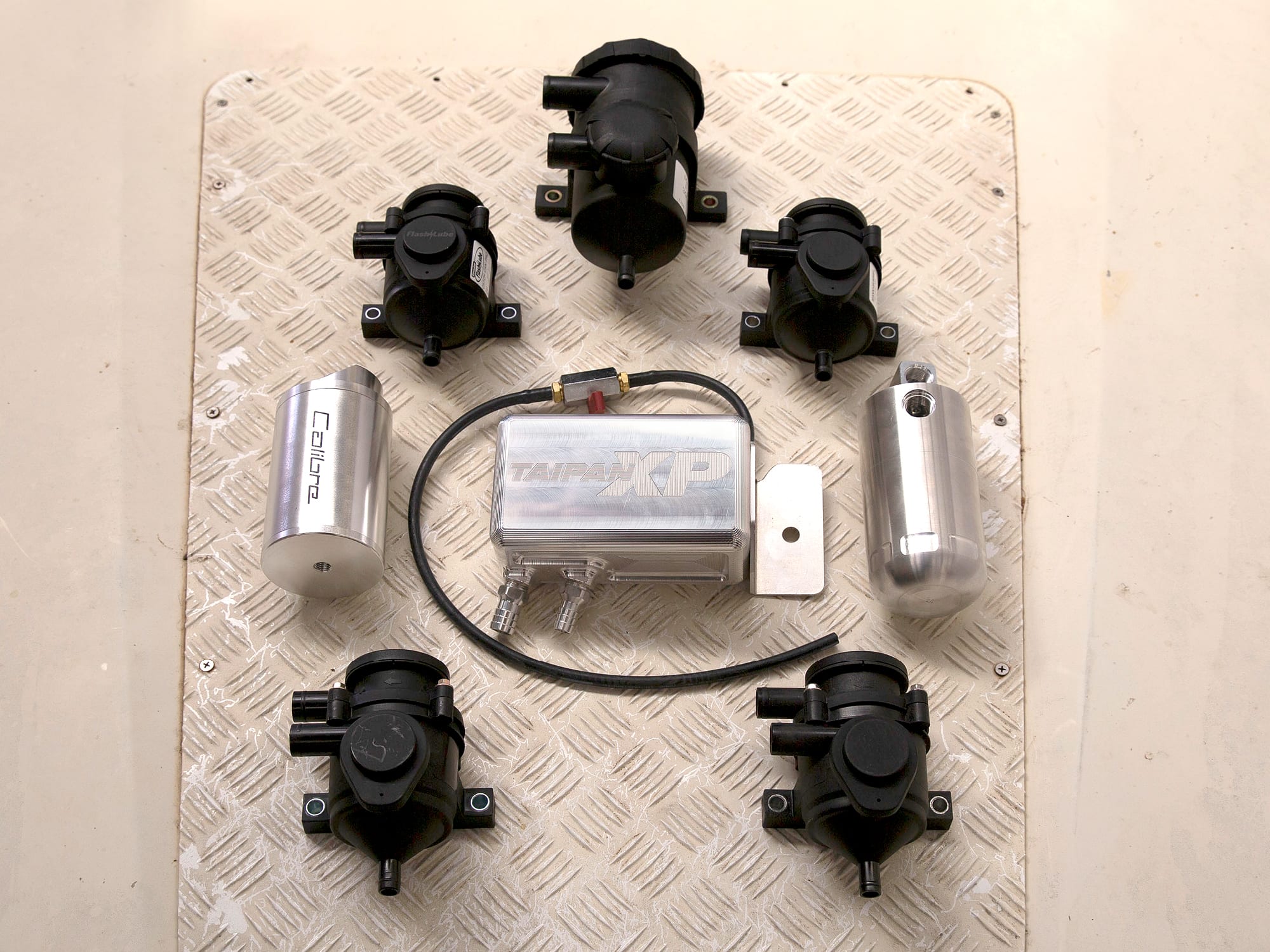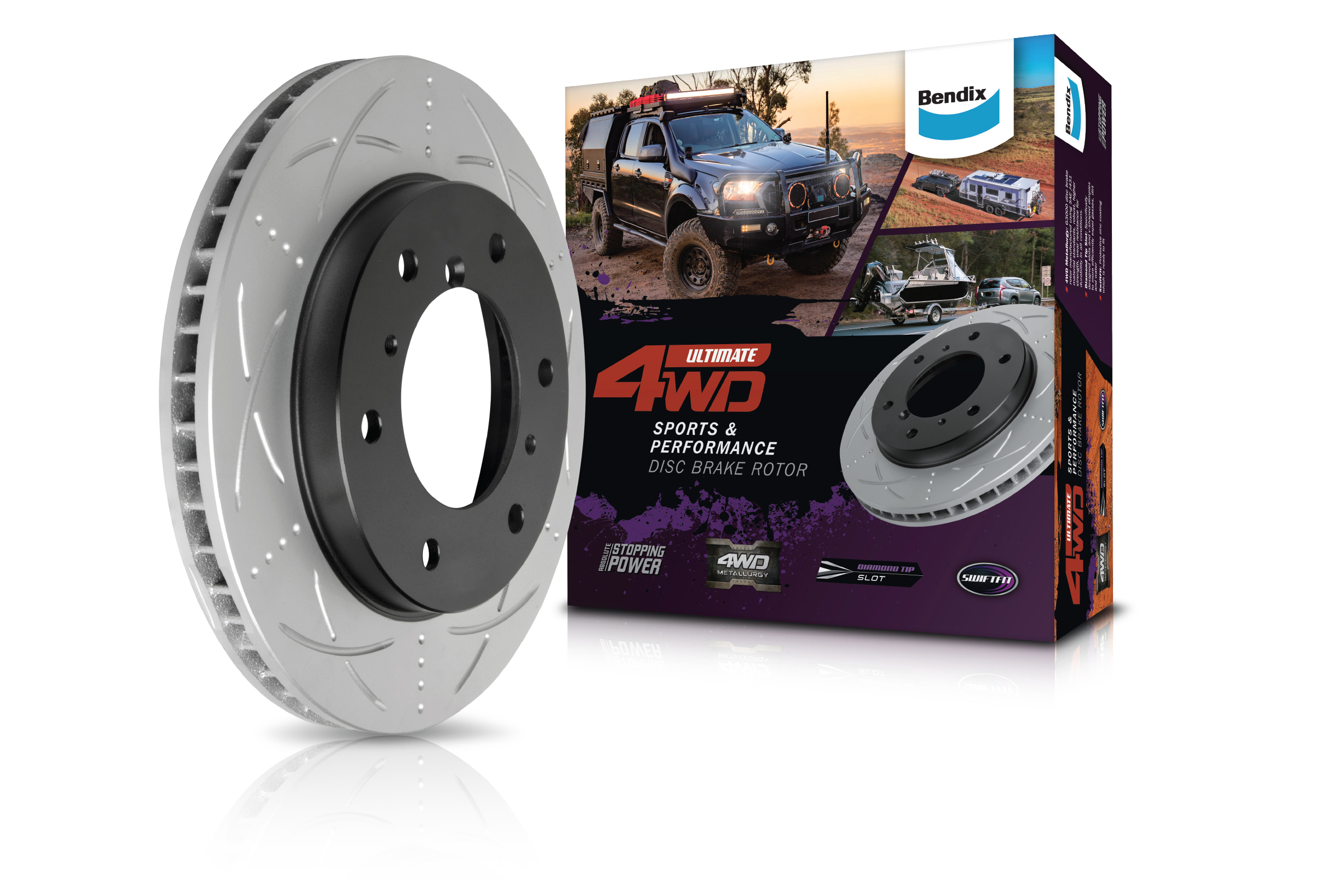We compare 7 of the best oil catch cans to see which is best for your engine
Words by Mark Kendrick and Sam Purcell, Images by Mark Kendrick, Evan Spence and Ben Mullins
There are two upgrades that are almost mandatory for reliability with modern turbo-diesel engines: extra fuel filtration and a good quality oil catch can. Clean fuel is obvious, but why the catch can? Read on.
What is an oil catch can?
On modern 4X4s, especially turbo-diesels, small amounts of gas from the combustion process in the engine seeps past the piston rings and into the sump. Crank case ventilation prevents this pressure from building up, by releasing it on older vehicles straight into the atmosphere, while on newer vehicles into the air intake to be burned in the cylinders. This air is heavily laden with oil mist, exactly the sort of thing that we don’t want floating in the air we breathe, nor in the air our engines want to breathe.
A catch can only has one job, which is to separate the oil from the air so the oil can be recovered and either disposed of appropriately, or fed back into the sump where it can continue to lubricate your engine. They are a passive device which won’t change the fuel economy or performance of your engine directly, and isn’t an illegal modification for a change. Instead, in theory a catch can will reduce maintenance costs and prevent a lot of potential issues.

Why would you want a catch can?
Modern turbo-diesel engines are highly-strung beasts with a lot of sensors, valves, filters and pipes required to keep them running healthily and efficiently. Now most engines vent the crank case pressure into the air intake, just after the air filter. This feeds through the turbo and intercooler via a couple of pipes, before reaching the engine. The turbo won’t be much phased by a tiny amount of extra oil; the temperature a turbo runs at will keep the oil vaporised. The intercooler is trying to take the heat out of the intake air, and as temperature drops, the oil mist forms droplets and sticks to the intercooler’s internal surfaces.
It doesn’t take long for a heavy breathing diesel engine to partially block the intercooler and inlet manifold enough to cause a loss in performance. Another problem that will occur is with the Mass Air Flow (MAF) sensor, which through the ECU regulates the fuel injection. A coating of dirty old oil doesn’t allow the MAF sensor to read the airflow accurately, leading to under-fuelling and a reduction in power. If the MAF sensor is completely out of its expected range, the ECU will implement limp-home mode and you’ll probably be on the phone to a tow truck.

How do catch cans work?
As with anything, there is more than one way to skin a cat. So there are different types of catch cans. The simplest, known as settling chambers, are a shiny metal tin with one hose in, one hose out and a way of draining the oil from the tin if it gets full. The next variety includes baffles to extend the distance the oil-laden air travels, or a filter media such as stainless steel wool or mesh to catch the oil mist.
The most advanced designs usually come from heavier industries, such as trucking and earthmoving. The feed-down effect for 4X4ers is a high-quality product that’s well researched and designed to perform, albeit with little concern for looking pretty in the engine bay. These more advanced designs feature a venturi, replaceable coalescing filter and baffles to extract as much oil from the air as possible. These are usually referred to as catch filters.

How to choose the right size catch can
The most critical task when choosing a catch can of any type is making sure the inlet and outlet hoses are the same or larger diameter than the factory crank case vent hose it is interrupting.
Some filters are a one-size-fits-all solution, while others come in a variety of sizes, with sizing aligned to engine power. For example, a 3.2-litre Ford Ranger could use a ProVent 150 as the engine develops 147kW, but a ProVent 200 would be better suited if the Ranger engine had been tuned for higher output. A larger than necessary catch can has no drawbacks apart from the space required to fit it, so yes, you can fit a ProVent 400 to your Vitara if you wish.
The other brands all claim to be appropriate for all 4X4 use, with Flashlube stating that even a well-worn 200 Series LandCruiser won’t overload the Catch Can Pro. In this comparison we have tested four 100L/min sized catch cans as being the most popular on the market and four catch cans of the next common physical size up, representative of the 200L/min size.
What makes a great catch can?
The role of a catch can is to separate microscopic oil droplets from the crank case air before the air is sent back to the engine via the turbo. Obviously, if a can is 0% effective, it doesn’t remove any oil from the air, while 100% effective removes all oil from the intake air. The other side of the coin is pressure drop. Remember the source of this oily air is the crank case ventilation system?
We want to vent the air efficiently. This is measured by the change in pressure from the inlet to the outlet of the catch can. Ideally, pressure on both sides of the catch can is equal, meaning the air is passing through without restriction, rather than backpressure trying to leak out upstream of the catch can and thus not flowing properly. The perfect catch can will have a 100% oil capture efficiency, and zero pressure drop.

How we tested them
Curtin University recently studied the effectiveness of a variety of catch cans commonly used on 4X4s. The brands included Mann+Hummel, Flashlube, Supercheap Auto, HPD, TaipanXP and some cheap eBay knock-offs. The method of testing involved drawing a measured airflow of 50-250 litres per minute via a vacuum pump through each catch can, measuring pressure before and after the catch can. Into the air stream, a nebulizer metered a fine, even mist of typical engine oil, in this case Castrol RX Super 15W-40. An optical particle spectrometer was used to measure the amount of oil that exited each catch can. The graphs display the volumetric flow rate of the air on the horizontal axis with % Efficiency in catching the oil particles and the pressure drop displayed on the vertical axis.
ProVent 100
Price Paid: $200
Inlet size: 19mm
Outlet Size: 19mm
A size and shape common in this comparison, this design uses a fibrous coalescing filter to remove the oil from the air and drain it down to the bottom of the can – either to be collected via a hose and tap or to drain back by a one-way valve into the sump if so fitted. The chamber design has the inlet offset to provide a cyclone effect around the filter while the outlet can be rotated to suit the installation. Two pressure relief valves are fitted to ensure the engine can still breathe if the catch can becomes blocked.
Flashlube Catch Can Pro
Price Paid: $435 inc fitting kit
Inlet size: 19mm
Outlet Size: 19mm
While appearing identical to the ProVent 100, this catch can has some very slight design tweaks, giving it different performance characteristics to the ProVent 100, with a slightly higher pressure drop but more efficient separation than the ProVent 100.
eBay knock-off 1
Price Paid: Our sample cost $58.70 inc GST with free shipping, without a fitting kit
Inlet size: 19mm
Outlet Size: 19mm
This 100L/min sized eBay-sourced knock-off looks for all the world identical to the Flashlube and ProVent 100 filters; even the filter media looks near-identical. On close visual inspection, the filter media is thinner than the two brand name filters mentioned, which would be why the pressure drop is lower, and the filtration efficiency is a little shy of the otherwise similar filters.
eBay knock-off 2
Price Paid: Our sample cost $53.65 inc GST with free shipping, without a fitting kit
Inlet size: 19mm
Outlet Size: 19mm
This no-name 100L/min sized knock-off obtained via eBay uses a similar housing to the Flashlube and ProVent 100 filters, however the effective fibrous coalescing filter element is swapped for a fine mesh gauze, which hurts efficiency massively. This filter failed above 180L/min with the pressure relief valve releasing.
ProVent 200
Price Paid: $200
Inlet size: 25mm
Outlet Size: 25mm
The ProVent 200 is a plastic bodied filter made in Germany, and uses a fibrous coalescing filter, baffles and a venturi. This design uses two pressure relief valves to protect the engine from over pressuring should the filter become blocked or oil quantity too high – which would shorten the life of oil seals.
High Performance Diesel (HPD)
Price Paid: $385 + shipping
Inlet size: 19mm
Outlet Size: 19mm
HPD’s catch can is machined from billet aluminium in Australia. A high-quality product with good aesthetic appeal, it shows thought to the design with integrated dipstick to make it easy to check oil volume. To empty it, one must unscrew the lower half of the can, a little more messy than those with drain taps.The design uses internal baffles and multiple layers of stainless steel gauze to condense the oil mist from the air; it is reasonably effective at separating oil compared to the other billet cans, but falls short against the moulded plastic products.
TaipanXP Billet Catch Can
Price Paid: $430 + shipping
Inlet size: 9.5mm
Outlet Size: 12.7mm
TaipanXP’s Billet Catch Can utilises baffles and a steel wool element to separate oil mist from air. The design is sensible and engineering sound, albeit not as effective as some other catch cans.
Being rectangular, this catch can should be the most efficient in space use inside an engine bay. It has an oil capacity of 350ml.
Calibre Polished 400cc Catch Can
Price Paid: $80.99
Inlet size: 10mm
Outlet Size: 10mm
Calibre’s Polished 400cc Oil Catch Can from Supercheap Auto is the lowest tech approach to catch can design, and quite frankly is ineffective. Simply a hollow bottle with no baffles or filter media, one might wonder how any oil mist may settle in the can at all. It is the cheapest known brand, however the eBay knock-offs are all more effective. With a slight modification, we have however found a use for this catch can…
Results breakdown
A good catch can as we determined earlier will have a high filtration efficiency and low pressure drop. For comparison, we’ll look at the results at 150L/min flow rate. Of those tested, the lowest pressure drop belonged to the ProVent 200. The highest pressure drop belonged to the TaipanXP can. The plastic bodied cans generally performed better than the metal bodied cans in this experiment.
For the filter efficiency, the most effective at 150L/min is Flashlube’s Catch Can Pro, and the lowest efficiency came from the Calibre catch can. To get a better visual of performance we can use Filter Quality Factor, which is an established method for comparing different filters for the same application at the same flow rate. Filter Quality Factor uses a formula comprising both efficiency and dry pressure drop.
Conclusion
The results are in, and the case is clear. The Flashlube Catch Can Pro and the Mann+Hummel ProVent range are the most efficient oil separators tested. Coalescing filters are the most efficient at removing oil droplets without restricting airflow. The cheap knock-offs lived up to their price and not much more compared to the Flashlube and Mann+Hummel products, however even the lowest performing knock-off had performance on-par with the best of the blingy billet aluminium catch cans. The performance of the beautifully machined metal catch cans was disheartening, though hardly surprising when we opened the Calibre can up and saw it contained a whole lot of nothing. Function before form wins again!









